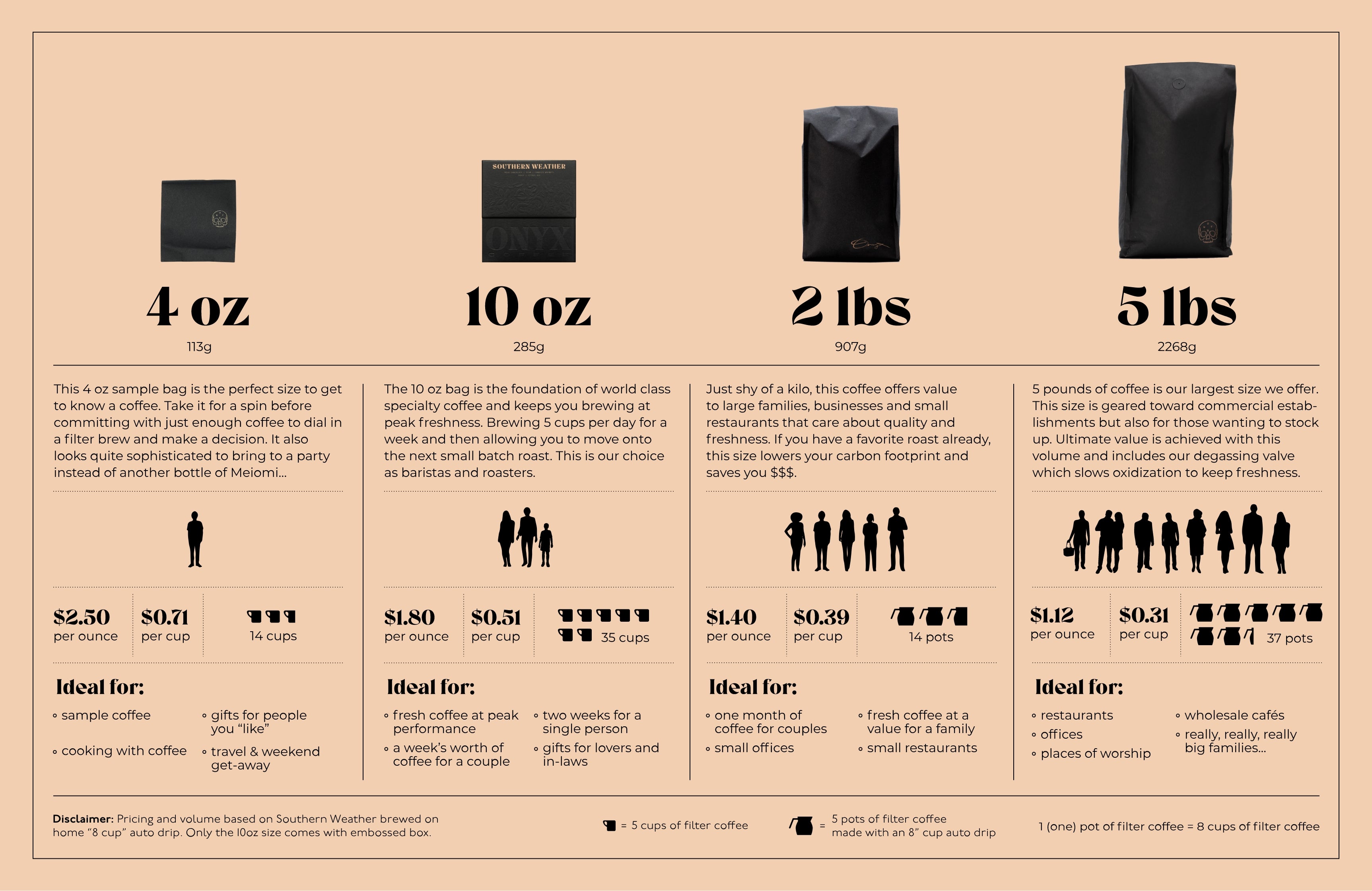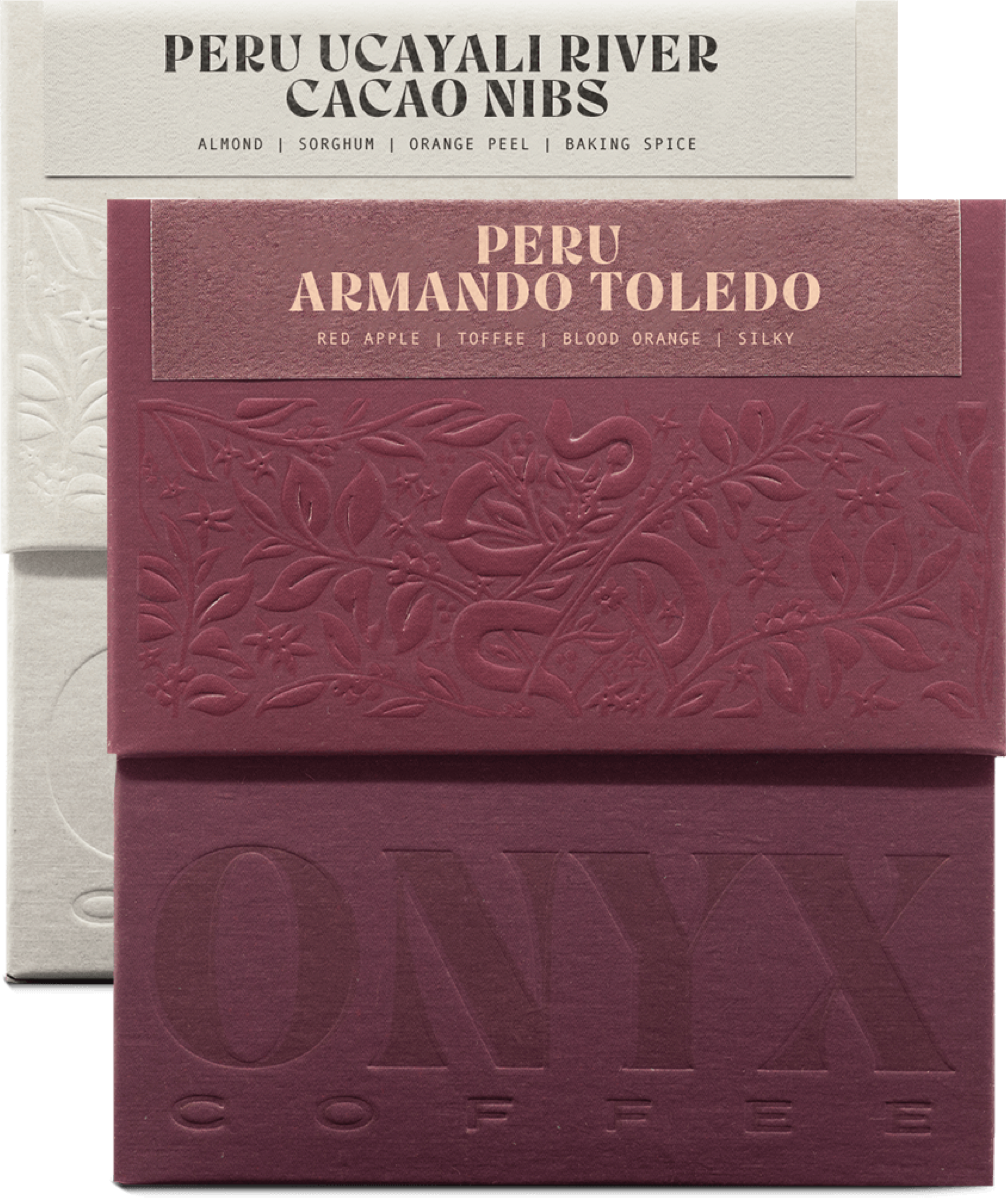Story
PERU ARMANDO TOLEDO
Red Apple, Toffee, Blood Orange, Silky
Located in the Sandia Valley, Armando Soncco Toledo produces coffee on his farm Alto Belen. Armando grows coffee using traditional techniques, depulping his coffee with a hand-cranked depulper and fermenting his coffee in concrete tanks. Much of the Sandia Valley is planted with Bourbon variety, producing a juicy and elegant cup with subtle florals and notes of complex sweet red apple.
“Armando Soncco Toledo was born on June 10th, 1975 in the coffee-producing region of Sandia Valley. More than two decades ago he inherited Alto Belen, although his business didn’t take off until 2004 when he became an associate of Cooperativa Agraria Cafetalera Tupac Amaru. Red Fox has been working with Armando for many years and we are excited to offer his excellent coffee to you once again.
Within the massive Sandia Valley lie many smaller valleys, each hosting unique coffee-producing communities of smallholder farmers averaging just 2.5 hectares of coffee land. Due to a UN- led replanting project in the 80s, much of Sandia Valley grows Bourbon-variety coffee, offering an elegant, floral, honeyed, and dynamically citric character, or, alternately, a rich, full-bodied, and incredibly sweet malic red apple or pear aspect. These coffees are entirely unique to Puno, distinct from what you’ll find in other regions of Peru, and offer something for every palate.
Through many ups and downs, Puno’s Sandia Valley has been a constant in our work. As some relationships within the valley have ebbed, others have grown, and the coffees have only gotten better over time. We’re excited to bring you this year’s offerings, many of which we actually bought in parchment and milled ourselves, as well as to see what the future holds for Sandia Valley and the coops within.
All of these farmers are small in terms of their landholding. Harvest period in Sandia, Puno is between August and October They all use hand crank depulping machines, ferment in concrete tanks and wash in the same tanks. A few of them have channels for a density separation after washing. The climate can be rainy, also similar to Colombia, so many producers use parabolic beds for drying. The cooperative also offers drying services at their receiving stations meaning that they’ll dry coffee to proper moisture levels for the farmers.”
PERU UCAYALI RIVER CACAO NIBS
Almond, Sorghum, Orange Peel, Baking Spice
These cacao nibs come from the Ucayali region, which has been a principal growing region for cacao for years. Recently, the farmers near the Ucayali River have taken strides to improve the flavor and production of their cacao through fermentation and drying techniques. These intentional steps at improving quality have elevated the reputation of this region to fine cacao. We enjoy these nibs as ingredients in baking and smoothies, and they are also great in handfuls by themselves. They don’t call this “food of the gods” for no reason…
CACAO OF EXCELLENCE
Ucayali River Cacao is located near Pucallpa, Ucayali, Peru. Until recently this area has not been known for fine cacao, but due to the efforts of USAID and Alianza Cacao of Peru there are farmers that are abandoning coca production for Cacao, Coffee and Oil Palm. URC is working together with USAID and Alianza Cacao of Peru to purchase raw material from these farmers at a price that is above market. Our goal is to produce a high quality fine cacao while helping these farmers earn a legitimate income rather than returning to coca production.
We are working with close to 400 small farmers. Many of them are located within a 30 minute drive from our processing facility. We believe that one of our main roles with our farmers is for us to handle the time consuming duty of fermentation and drying of their cacao. Considering the extra money that the farmer would make doing the post harvest work compared to if they spend that time taking better care of their crop and improving production, their best return is when they can improve their yield. When the farmer does his own ferment they must stop all work in their fields every time that it rains, which is often, to cover their drying cacao. As well, they must stop work in their fields to turn the cacao daily. In addition they must find a buyer and deliver their dried cacao to a buyer that likely will cheat them on weight and/or price. Since we pick up the wet cacao at collection stations every 15 days, much of this extra work can be put into increasing their production, which is where most of their money is made.


